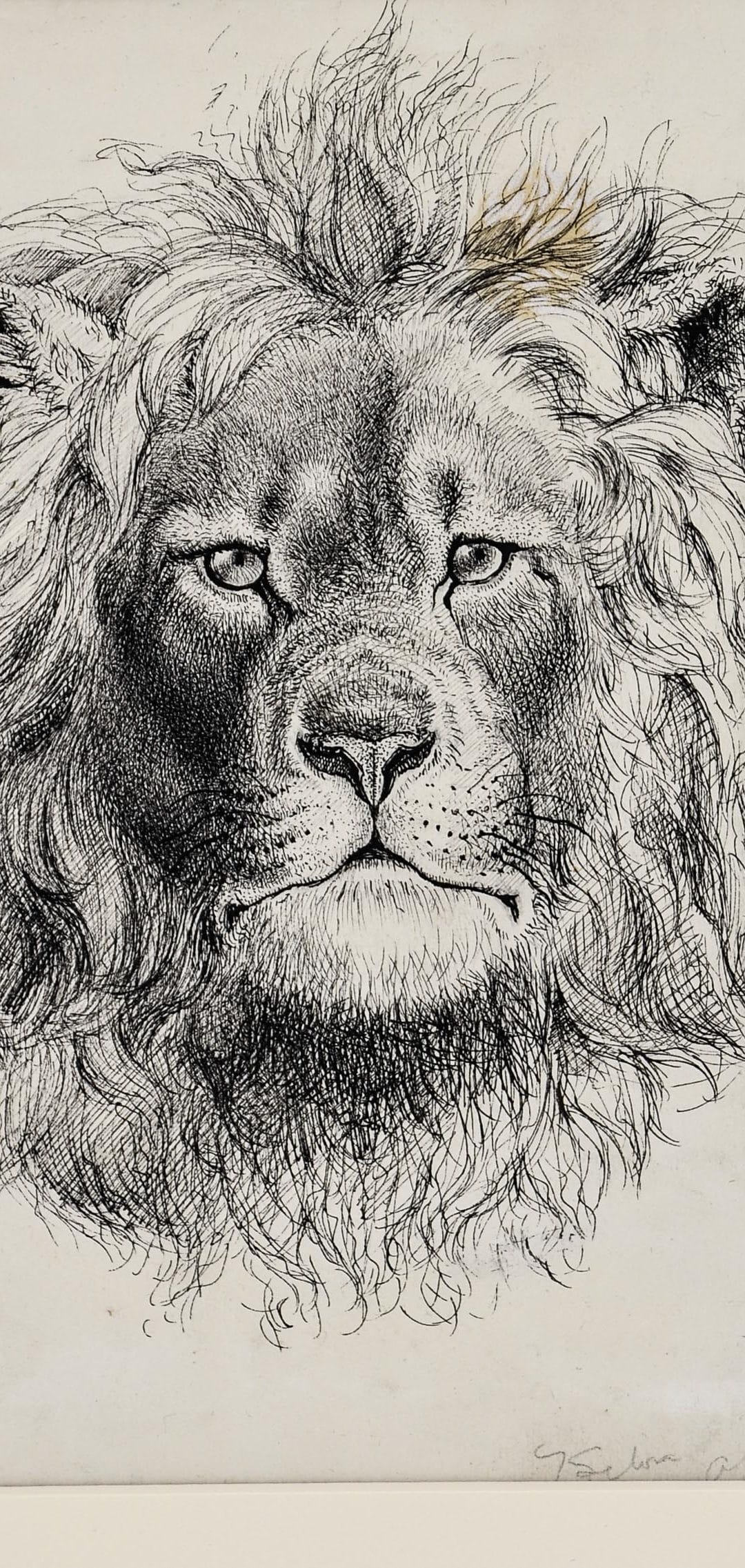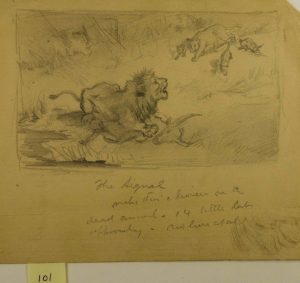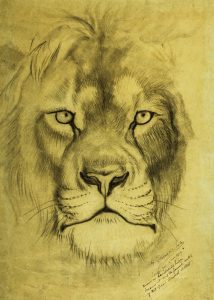Seton’s drawings of big cats can come across not as generic “lion” or “tiger” but as actual portraits of individuals. Some of these were done at the London Zoo during his first trip abroad.
One of Seton’s animal subjects, “Landseer’s Lion” was named for the English animal painter Sir Edwin Henry Landseer (1802-1873).
One of Landseer’s most famous works, “The Monarch of the Glen” features a noble stag 12-point deer majestically posed on a ridge with Scottish mountains rising behind—a true animal hero. Engraved copies of the painting were then wildly popular and would have been known to Seton from the time of his 1881 art studies in London, if not before. At a later time, Seton painted a commissioned copy of a Landseer painting. (I haven’t found it—yet.) More importantly, Landseer early-on learned animal anatomy through dissection, coming to a thorough understanding of the bodies of his subjects. Seton may have been inspired by this approach when he published his masterful Studies in the Art Anatomy of Animals (1896).
(All Rights to images reserved by Academy for the Love of Learning)




